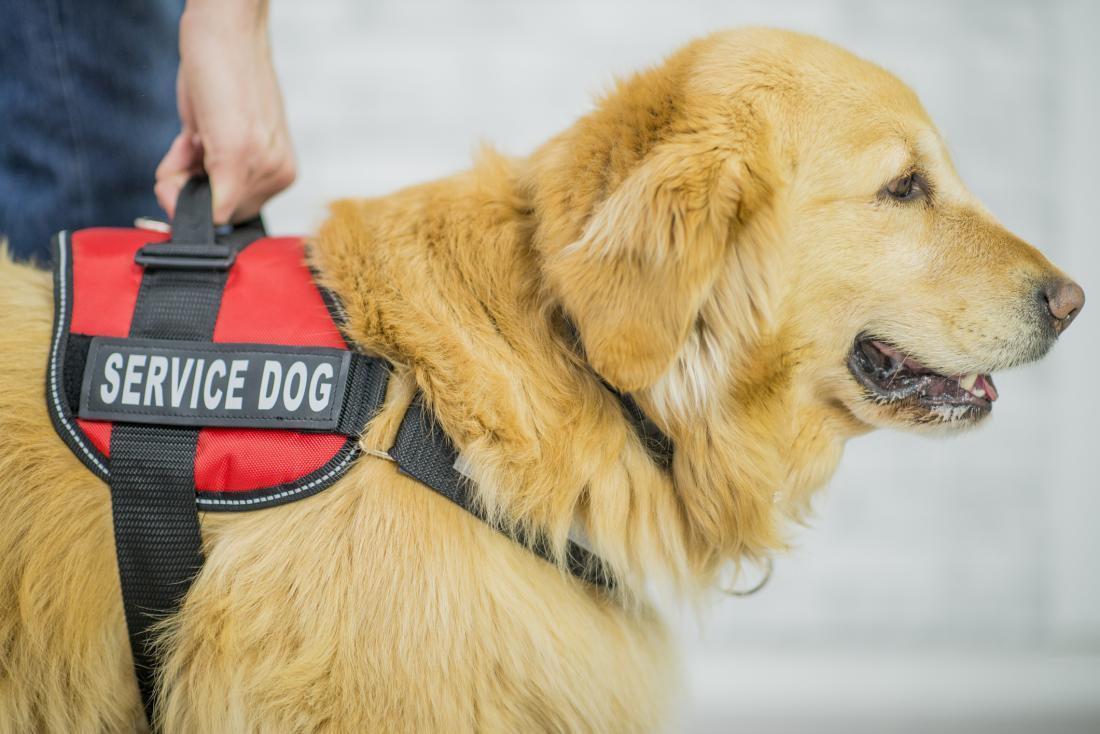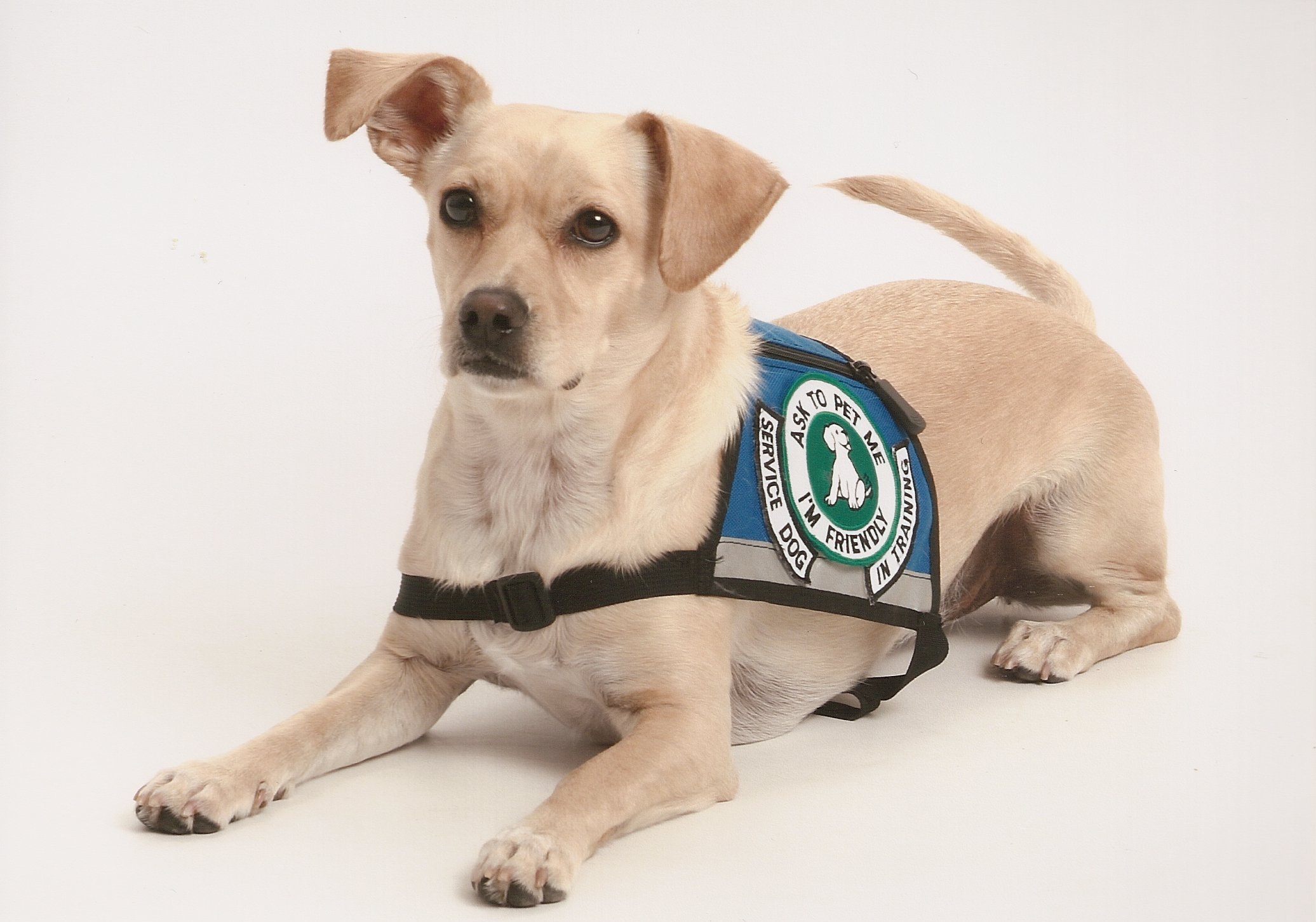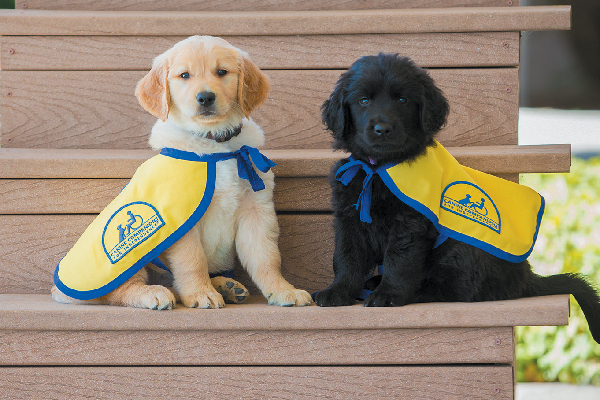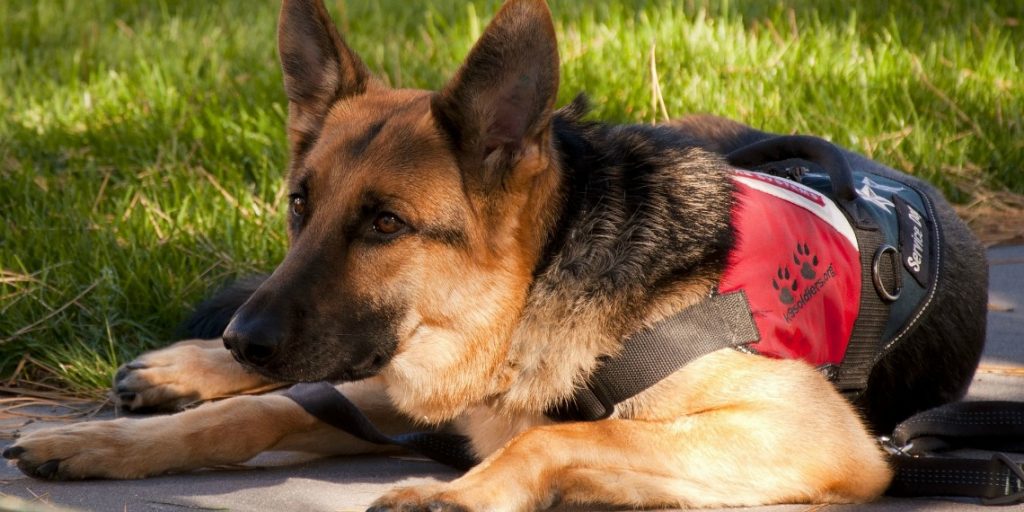
Even in this day and age, service animals and the ins and outs of interacting with them are largely misunderstood. Adding to the misinformation, each service animal is uniquely trained to be a good fit for the needs of its handler.
This means that what is okay for one may not be for another. Your seemingly innocent, friendly gesture could trigger a service animal to act in accordance to a command that it’s learned - even if there is nothing wrong.
As most people have come to realize, for this reason, it is best to not approach a service animal unless you are directly involved with its handler and have been personally instructed as to what the ins and outs are.
With that information in mind, there are some universal truths out there about service animals that may help to to understand the process that they undertake, and in turn make the interactions that you do have less intimidating.
Read on to learn more about what you need to know!
Service Animals vs. Emotional Support Animals

In the past couple of years, there has been a surge of people utilizing the therapeutic effect of having animals around for emotional support, and with good reason!
Animals provide a great deal of comfort during times of stress.
For this reason, emotional support animals are often allowed, at the discretion of the staff and property owners, to be in spaces where animals are otherwise not allowed, like in pet-free apartments and in the main cabin during flights.
Due to the fact that this is also the case for service animals, many people have come to believe that they are one in the same, which is not the case.
Service animals undergo intensive training to get their credentials.
They not only learn the commands necessary to assist their handlers with essential day to day tasks but are often trained to assist in ways that bridge the gap between life and death.
While emotional support animals may bring comfort during panic, they don’t undergo as much training, and the majority of the time, their presence is not considered to be a medical necessity.
This is why service dogs receive more protection under the law and are legally allowed to be in places that emotional support dogs are still barred access from.
Psychiatric service dogs.
While emotional support dogs do not undergo the same training as service dogs, there is still help to be had for those dealing with severe mental health disturbances.
For example, in the case of someone with PTSD who may experience unpredictable flashbacks, or for those dealing with dissociative disorders.
Psychiatric service dogs are trained to recognize and respond to specific symptoms and changes in behavior to prevent those dealing with mental health conditions from accidentally harming themselves or others.
They do this in a variety of ways like
- Entering rooms to provide safety checks
- Keeping those having flashbacks from accidentally wandering into traffic
- Interrupting and blocking a handler from mutilating and harming themselves
- Medication reminders
Becoming a Service Animal

As we touched on above, there’s more than one type of service animal, as people with varying disabilities all have different needs and medical issues to be concerned with.
Visually impaired people have guide dogs to assist them as they navigate. Those with diabetes and conditions like epilepsy have medical alert dogs that are trained to provide warnings about blood sugar changes and oncoming seizures.
The one thing that these dogs all have in common is that they’re all thoroughly trained.
Different Breeds Have Different Strengths
While some dog breeds are suited to be trained in a variety of different functions, in most cases, certain breeds are better suited for some conditions than others.
For example, smaller dogs like Toy Poodles and Dachshunds make great medical alert dogs because they are small enough to maneuver around with ease and to get close enough to pick up on the change in scent that comes with a drop in blood sugar.
Larger breeds like Saint Bernards are typically excellent at providing mobility assistance.
While labradors, retrievers, and shepherds excel at performing tasks relating to vision and hearing impairment.
Breeding Programs Play a Big Role in Predictability
Most dogs that enter the world of service are bred to do so through special programs.
While dog breeding is frowned upon in the pet industry, it is a necessary “evil” when it comes to the service world, for a few different reasons.
The main one being a greater level of predictability when it comes to the temperament and trainability of canines.
Not all dogs are suited to be service dogs, and breeding programs allow for more control over the number of dogs that will take well to going through the training.
About 50% of all dogs that enter training programs don’t make the cut and are in turn adopted out as pets.
It’s no easy feat!
How Long The Training Takes
Like with any kind of learning, the younger the animals are when it begins, the easier it is for things to sink in and take root. This is why most service dogs begin their journey as puppies, although this is not the case for all of them.
Training begins with the basics. Without a solid foundation of obedience skills and public handling, the other more specialized tasks become compromised.
All service dogs need to remain alert without becoming reactive. They need to be adept at not succumbing to the distractions of busy, public environments so that they can be on deck for their handler at all times - all while remaining alert enough to know what is going on around them.
Given that service animals spend a lot of time in public spaces, they must also be trained and capable of following commands pertaining to things like going to the bathroom.
Most training programs last from 6 months at a minimum and in some cases, up to a full year.
Disabled People Legally Retain The Right To Train Their Own Animal
While it is without a doubt recommended that the animal goes through a professional training program, it’s not always feasible from a financial standpoint for people to do so.
In this case, the individual or a friend/family member can work with a service animal candidate to train it to complete specialized tasks.
Luckily, professional programs provide valuable information and resources that can assist with helping the process to go smoothly.
Even if trained outside of a professional program, there are downloadable test guidelines that can help to determine if an animal is truly ready.
The Do’s and Don'ts of Service Animal Interaction

- Do not speak directly to the animal or make eye contact with it. Instead, address the handler directly with any comments or questions you may have pertaining to the dog. While service animals are trained to tune out distractions, there’s no need to make it unnecessarily difficult for them.
- If you can help it, you should avoid allowing your own animal to approach a service dog that is working to protect their handler. An altercation could result in serious and life-threatening consequences for the handler. Even if your dog is typically friendly with other animals, it is not a fair risk to take.
- If a service animal is purposely trying to get your attention, be sure to find its handler right away. It could be intentionally trained to get help from nearby people in the event of a complication. Some dogs are even trained to call 911! If you aren’t sure who it belongs to, the animal will likely be trained to lead you to its handler - so just follow.
- At the end of the day, service animals still embody their true nature at their core no matter how much training they undergo. Just like humans who have important jobs, a little bit of rest and relaxation can go a long way. Every condition is different, and not every disabled person will need their dog to be on alert 100% of the time (although some do). Many service dog handlers have set commands that let their dogs know when it's okay to take a short break from their duties - so be sure not to judge a person with a service dog as “fraudulent” if you should catch their handler allowing them to play.
When it comes to understanding service animals, the information provided here is really just the beginning. The ways in which we are able to work with animals to support our wellbeing continue to grow all of the time. If you have a question pertaining to legality or something else of a specific nature, be sure to reach out to a team of professionals to an up to date answer!


